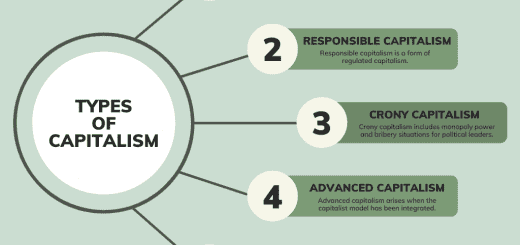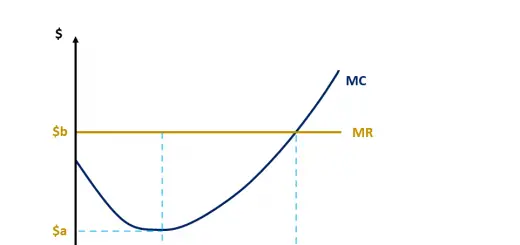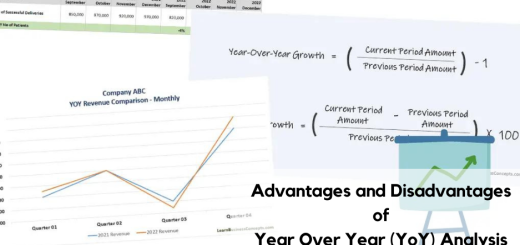Oligopoly Market – Advantages and Disadvantages
An oligopoly market is a market structure type in which less number of firms have the entire market control. These few firms decide the entire prices and supply of the market on a collective basis. But they can’t control the market on their own.
We can see oligopolies in airlines, steel, crude oil, and medicine industries. Companies in these industries prefer collaboration rather than competing with each other. They set prices together on a collaborative basis or choose a leader that will set the prices, which others can follow.
Advantages (Pros / Positives / Benefits) of Oligopoly Market
1. More Research and Development Space To Firms
When there is an oligopoly in a market/industry, it reflects the high earning potential of the leaders, which can streamline their processes and create innovative products. The extra profit can direct toward research and development projects, which ultimately help their consumers to experience the quality.
As an example: the pharmaceutical industry is usually categorized as an oligopoly market in which a higher research cost is required. But with good profit margins, these pharma firms can pump more cash into their new research projects which ultimately benefit the community to reduce the impact of the disease.
2. Consumers Experience A Simplified Market
There is low competition and low new rivals in an oligopolistic market. This means that there are simpler choices for the customers to find the best possible product.
3. Oligopoly Can Turn Into A Competitive Strategy
The oligopoly market will have less competition, but the behavior of the firms can even be highly competitive. Consumers can benefit from lower prices and better quality goods and services due to the competitiveness of the firms.
4. Price Stability Due To Competitiveness
Usually, the prices of an oligopoly market are often higher than the normal competition. But on the other side, competitors can easily compare prices which there will be pressure for the firms. Firms enjoy low production costs due to the economies of scale, hence the prices can be reduced while enjoying a good profit margin.
From a consumer point of view, oligopoly is advantageous because they can easily compare prices among the few players in the market.
5. High Profits For Shareholders
With the little competition of the oligopolistic market, the companies have a good potential to enjoy a considerable profit margin. This is an advantage for the shareholders which they can get a satisfactory profit for their investment.
Disadvantages (Cons / Negatives / Drawbacks / Risks) of Oligopoly Market
1. Fewer Choices In The Market For Consumers
With the less competition of the oligopolistic market, there are fewer products produced. There are no other options available if neither of the products meets the needs of a consumer. Oligopolistic markets create fewer choices for the customers.
2. Excess Profits Not Shared With Employees
Oligopolistic firms usually gain a good profit due to the price margins. The profit can be shared among the shareholders and higher management only. The firm middle and lower levels can be ignored to share the excess profit which they left to fight each other for what is left.
3. Firms Can Not Make Their Own Decisions
Firms cannot take independent decisions and always have to consider the views of other dominant players in the market. An oligopoly market creates the only option for the firms to be collaborative, rather than trying to compete with each other.
4. Less Change For Small Businesses To Grow
Small businesses in an oligopolistic market fail to establish themselves because most of the market is captured by larger firms. New firms can not enter the market due to entry barriers. The threat of new entrants is low which results in less competitive rivalry.
Refer to Porter’s Five Forces to understand how each of the market forces impacts the competitive strength and competitive position of a company.
5. Discourage Innovation
An oligopoly market deters innovation by creating numerous barriers to market entry. Firms may have less interest to innovate because there is not much competition and other firms do not introduce new ideas to the market.
6. Price Setting
With a small number of established firms in an oligopolistic market, they can collude together to fix the prices of the products or services they sell. Firms can artificially inflate the prices in a collaborative manner because there is little competition.
An unrealistic price increase will result in a great disadvantage for the consumers.
Read More:
Market Structures
Oligopoly Market
- Definition, Types, and Characteristics of Oligopoly Market
- Real Examples of Oligopoly Market (in the USA, Canada, World)
- Seven Important Characteristics of Oligopoly Market
Monopoly Market
- Definition, Examples, and Characteristics of Monopoly Market
- Real Examples of Monopoly Market (in the USA, Canada, Australia, World)
- Important Characteristics / Causes of Monopoly Market
- Advantages and Disadvantages of Monopoly Market
Monopolistic Competition
- Overview, Definition, & Features of Monopolistic Competition
- Main Characteristics / Causes of Monopolistic Competition
- Real Examples of Monopolistic Competition (in USA, Canada, World)
- Advantages and Disadvantages of Monopolistic Competition
Perfect Competition


